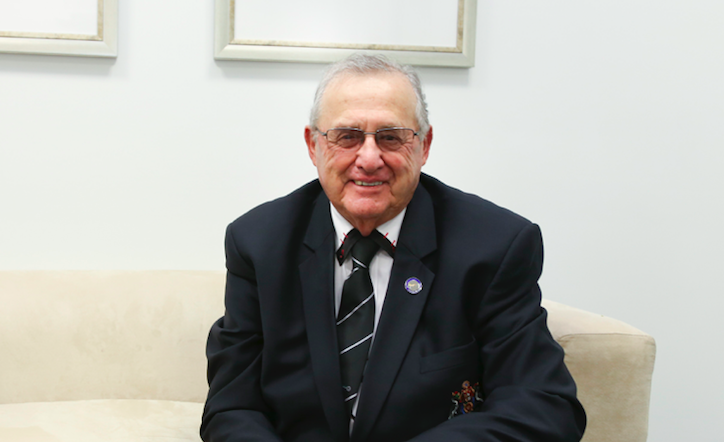After coming up through the ranks of a local community club, Mayor of Griffith City Council Cr John Dal Broi decided to support the growth of Griffith by joining the local government. Born and raised in Griffith, Senator Award recipient Cr Dal Broi has a strong affiliation with the community and is determined to raise Griffith’s profile as a diverse regional city, with people from approximately 60 different nationalities calling Griffith home.
Tell me a little bit about yourself – why did you decide to join Council and become Mayor?
In years past I was part of a service group of young men, which was similar to a rotary club for the community. I progressed through the executive roles in the organisation to become President.
I decided to continue serving my community through the Local Government and was elected in 1974, before being elected Shire President in 1980. I held the role on and off for about 15 years before I stepped aside in 2008.
Many people were encouraging me to stand again in 2012 and I did so because it was a popularly elected position.
Local Government was a huge learning curve for me and there’s a lot of satisfaction in it, as you have direct input into the growth of your community.
How would you describe your personal vision as Mayor for Griffith?
My vision is to grow Griffith while maintaining our status as a regional hub. There’s an expectation for Griffith to supply a lot of the services required for the western Riverina. Griffith is a city of 27,000 people that provides services to over 50,000 people based in the smaller communities around us.
I believe Griffith will grow into the size of an Albury or Wagga Wagga in the years to come, with 40,000 or more people to call our city home.
I would like to see Griffith become a centre of excellence for irrigated agriculture. There are some big challenges with that aim, because the Murray Darling Basin Plan is affecting the expansion of the industry in our region and other impacted communities along the river.
Our region has so much going for it, particularly in regards to commodity agriculture and diversity – we have cotton, almonds, fruit, vegetables. My view is the irrigated agriculture industry should grow and create additional employment opportunities in Griffith.
What do you see are the challenges for Griffith City Council?
The biggest challenge is the uncertainly around water due to the Murray Darling Basin Plan. If we were to get some certainly around water, it would create more employment opportunities and support the growth of industry.
We are also working to provide suitable housing for community members who have jobs in our processing and manufacturing industries. These people are not on big wages, they have families and are educating their kids. It is very important to us that we get their residential living opportunities right.
How many houses are you seeking to have established? How much demand is there?
There is a fair bit of housing demand at a certain price point. We have over 500 lots that will be on the market and I would say close to 100 homes would create adequate accommodation for people.
Unfortunately we do experience a degree of homelessness in our community, which is mainly based around the casual and seasonal work on farming properties. At any one time, we could have up to 500 backpackers working at farms and processing plants that really need accommodation.
We’re working with private industry to look outside the square and address this housing requirement – whether that includes dormitory types of accommodation, single bedrooms, or a variation of accommodation options going forward.
What are the social values held by the community?
One of the most important things people in Griffith value is their health. We are supporting the people of Griffith as they maintain their wellbeing through increased access to fitness and health infrastructure.
We’re currently building new sporting infrastructure for the community, including synthetic hockey and netball courts. We have also received $14.5 million in grants from the State and Federal Governments, with Council contributing another $10 million to build a 50 metre outdoor pool.
Council also received $220 million in funding from the State Government to redevelop the Griffith Base Hospital, which will include additional oncology services and extensions to critical care and in-patient areas. We were also very much involved in building a private hospital, which we now lease to St Vincent’s Private Hospital.
There are also over 20 places of worship catering for over 60 nationalities in Griffith, which ensures that people of any religious background are provided for in our regional capital. We have a very diverse community that works together to support the growth of Griffith.
What are the long-term growth opportunities for Council in Griffith?
We are very focussed on providing sound leadership and ensuring the Council is in a strong financial position going forward.
We’re one of the few Local Government areas in New South Wales to live within our rate capping. We’ve run surpluses ever since I returned to Council in 2012 and continue to do so.
That’s one of my biggest priorities, because if a council isn’t financially sustainable, then Council will need to request a special rate variation. This upsets the community, so staying within the rate cap legislation means are very few complaints about the rates from community members – if any!
Why did Griffith decide to join Regional Capitals Australia?
We saw joining Regional Capitals Australia as an opportunity to learn how other regional cities are building their cities, while gaining the recognition for Griffith as a liveable city, which is great for business and new population attraction.
Regional Capitals Australia membership is beneficial for ourselves, but it is also useful for the western Riverina and the local government areas surrounding us.
